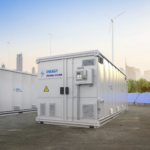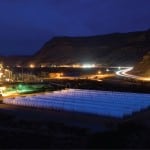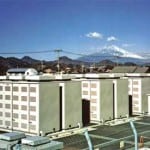Xcel Energy claims that preliminary tests of a 1-MW battery-storage technology system shows the technology works. The company announced on August 3 that its wind-to-battery project showed it was possible to reduce the need to compensate for the variability of wind generation.
The preliminary test results indicate that the battery has the ability to effectively shift wind energy from off-peak to on-peak availability; reduce the need to compensate for the variability and limited predictability of wind generation resources; and support the transmission grid system by providing voltage support, which contributes to system reliability. Results also indicate that this technology may be applicable for solar energy.
Xcel Energy purchased the battery from NGK Insulators Ltd. The sodium-sulfur battery is commercially available, and versions of this technology are in use elsewhere in the U.S. and other parts of the world, “but this is the first U.S. application of the battery as a direct wind energy storage device,” Xcel said.
The small demonstration project was part of the company’s research into how to integrate unpredictable renewable energy into the grid. Begun in October 2008, the research is being conducted with a battery installation in Luverne, Minn., that is connected to a nearby 11-MW wind farm. Twenty 50-kW battery modules in the demonstration weigh approximately 80 tons and are able to store about 7.2 MWh of electricity, with a charge/discharge capacity of 1 MW.
The preliminary test results indicate this technology can shift wind energy from off-peak to on-peak availability and can support the regional electricity market by responding to real-time imbalances between generation and load. The system could provide voltage to the transmission grid, which would contribute to system reliability, according to Xcel Energy.
Testing will continue to see how the battery system handles larger amounts of wind energy transfers to the grid. The next phase of the project will determine the potential cost effectiveness of the technology. A final report for the project, which received a $1 million grant from Xcel Energy’s Renewable Development Fund, is expected in summer 2011.
In addition to NGK, partners in the project with Xcel Energy include: S&C Electric, the University of Minnesota, the National Renewable Energy Laboratory, the Great Plains Institute and Minwind Energy, LLC, and Gridpoint. Xcel Energy is testing emerging technology and energy storage devices as part of its overall Smart Grid strategy, which modernizes and upgrades the grid to allow for easier integration of renewable energy sources.
Sources: Xcel Energy, EERE, POWERnews










